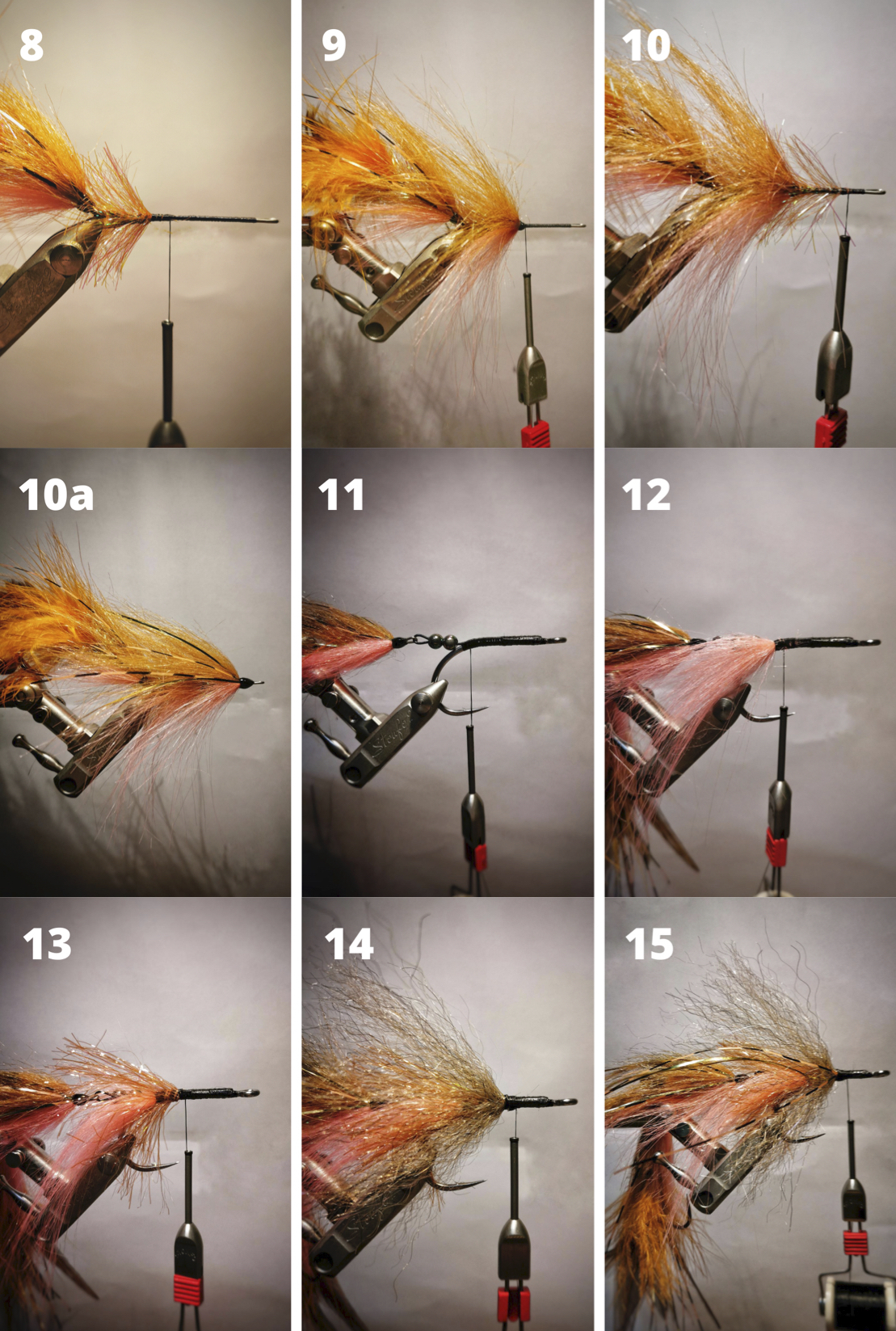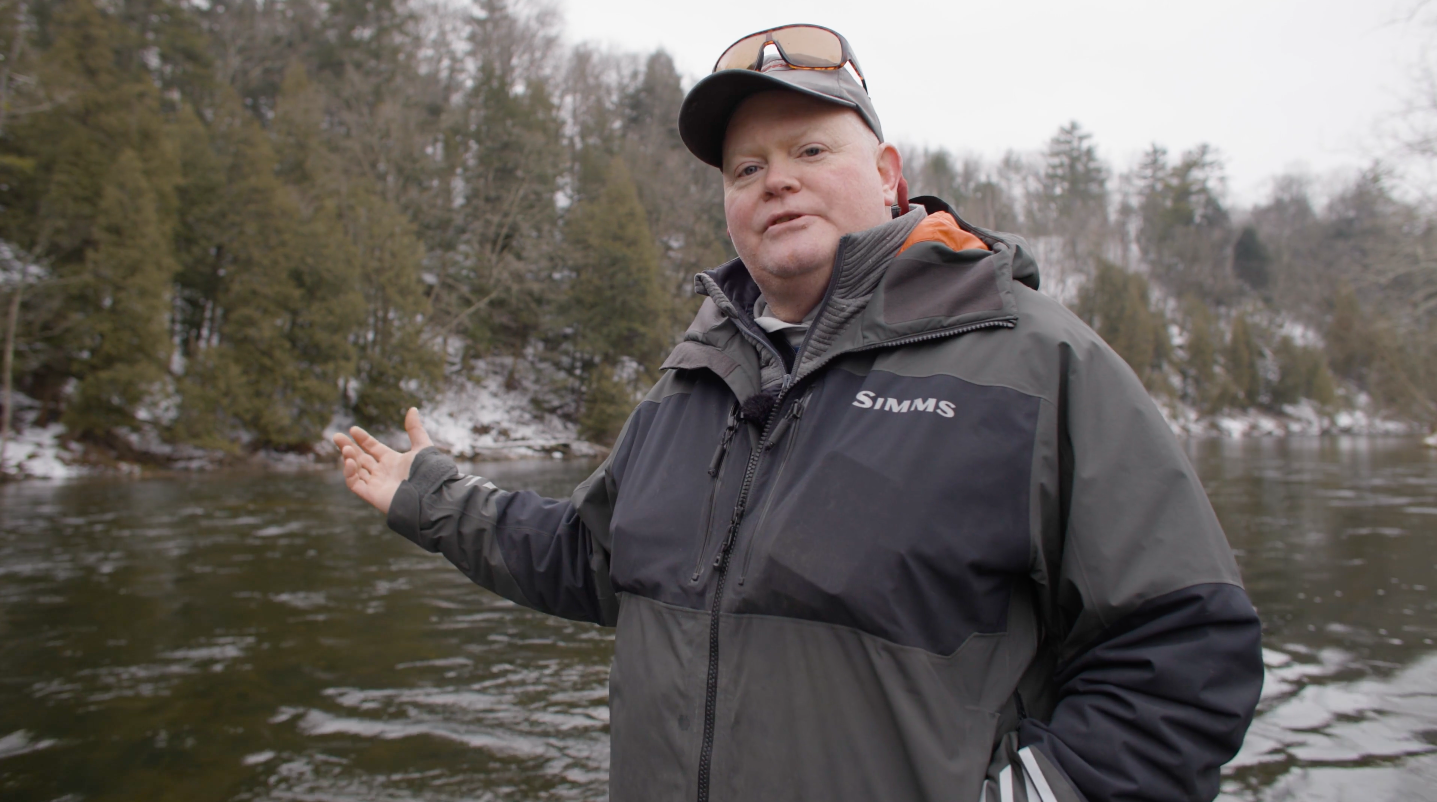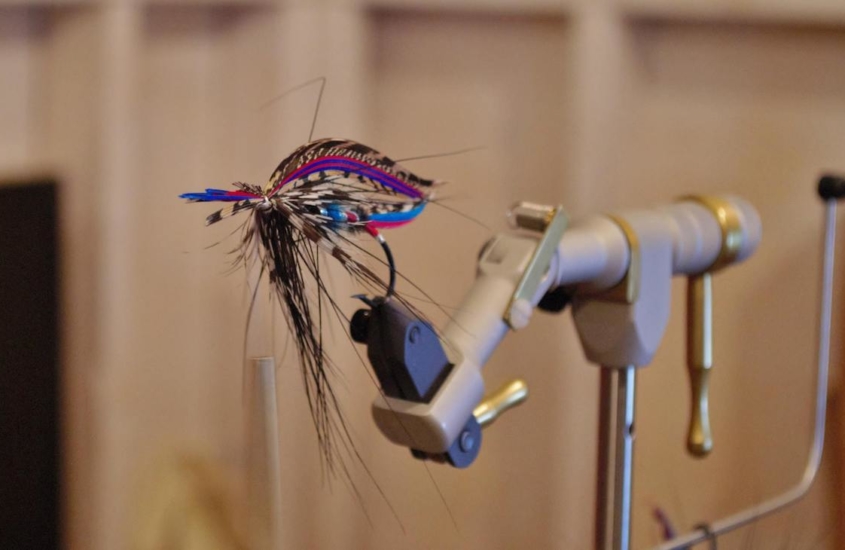After a lifetime of pursuing the enigmatic Murray cod, it’s a welcome sight to see the popularity of fly fishing for the species grow significantly in recent years. We know that monster Murray cod will feed on large prey, therefore a larger fly means a better chance at a big fish. This has led to a mindset amongst anglers that bigger is better, and that bigger rods are needed to throw enlarged versions of their favourite streamer patterns. It is not uncommon to see anglers use 12 weight rods in the pursuit; I too once had this mindset.
Many of the techniques and situations used to target Murray cod here in Australia cross over with those used for species in the Northern Hemisphere. Musky and pike, like Murray cod, are in the ‘fish of a thousand casts’ group, requiring continual and often exhaustive casting with large flies and big rods. As a guide to both lure and fly anglers, much of this fly’s inspiration has come from the lure world, specifically swimbaits and glide baits. Tyers like Blane Chocklett have also steered me towards body tubing, rather than the water-hoarding chenille that I’d used in previous versions of this fly. Upon observing these fisheries and the anglers within them (many of whom were using 9 and 10 weight rods), I had a light bulb moment! It was time for me to re-engineer the fly and adapt some of the tying techniques commonly used in other fisheries. I set out to design a pattern that was not only easier to cast, but one that could be cast with less effort. The result was a fly I’ve since named Mr. Twitchy (Senior).
Material choice
This pattern, like many of my larger flies, is a combination of both natural and synthetic materials. Natural materials are chosen for the way they kick and pulse in the water—each material has its own inherent movement. Marabou, for example, ‘breathes’ in the water to create movement, replicating a stationary fish that is maintaining its buoyancy (e.g. small movements of their fins). It also has great movement on the strip. The tail is tied splayed, as opposed to that of a fly such as a deceiver. This creates a tail that generates more movement when fishing with a strip-pause technique.
The combination of synthetic materials for all three sections of this fly create the underwater illusion of perceived size and volume. Craft fur makes up the bulk of the body and, although a synthetic material, it behaves very much like a natural material underwater. Bucktail can be used, but I prefer the craft fur and the undulation it adds to the fly.
Body tubing allows me to remove bulky chenille from the pattern, while maintaining the critical shape of the head. This ensures my fly stays light and maintains its ability to swim side to side. Utilisation of UV flex resin to finish the flies’ head has made the pattern more durable compared to epoxy as the resin doesn’t crack as readily when it hits snags or other obstructions.
Gear required to fish it
This fly was designed to be cast on 9 and 10 weight rods. Like so many other situations in fly fishing, line choice is critical to get the most out of your time on the water. Lines with short aggressive heads help quickly load your rod, cutting down the need for numerous false casts. The fly angler needs to conserve energy in any way possible if they are going to spend hours and even days casting for a single fish.
It is recommended to always fish this fly on a sinking line as it achieves a much stronger swimming action—floating lines tend to pull the head of the fly to the surface.
Lastly, keeping your leader short greatly assists casting large flies. For Murray cod, I recommend a 2 piece constructed leader totalling 5ft, with the butt section made from 60lb and the tippet section either 30 or 40lb mono (or fluoro, depending on the terrain being fished). These are very heavy leaders, but they’re often required for abrasion resistance when fishing over heavy structure.
This fly does take some time to tie, but the reward could be a fish of a lifetime.
Recipe:
Hooks: Ahrex PR320 6/0 rear, Front Ahrex SA270 6/0. For a lighter fly where ultimate strength is not required the front hook can be Ahrex TP610 6/0 or similar wide gape pattern. You can tie a smaller version with a 25mm shank, 4/0(rear) and 6/0 hook(front).
Thread: 210 Denier
Shank: 35mm predator
Connection: 90lb 7×7 nylon coated wire (go lighter if desired), 2x 6mm beads
Flash: Magnum Flashabou (Barred Orange/Black and Gold
Tail: Strung saddle hackle feathers (Brown)
In front of tail: Marabou (Burnt Orange)
Body material: Medium palmer chenille for rear hook, large palmer chenille for front hook (Root Beer)
Winging: Premium or Extra Select Craft Fur (Orangutang Rust and Salmon Pink)
Front hook body and head: 5 inch baitfish brush (UV Bronze Back)
Under body for head: 1/4 body tubing (Tan)
Eyes: ½ inch (Red 3d)
Adhesives: Super glue brush on, Super Glue Gel, UV resin thin and UV Resin flex.
Tying Steps (Step by Step Photos Below)
1: Starting with rear hook, lay a thread base and tie in flashabou at 1.5 times shank length. Use a mix of gold (3 strands) and barred orange/black (3 strands) doubled over to form 12 strands.
2. 2 pairs of strung saddle hackle feathers, tied splayed (curving away from hook). Advance thread forward 1/3 on the shank.
3. Tie in 3 clumps of marabou, 1 each side, 1 on top.
4. Medium Palmer chenille wound forward.
5. Craft fur tied forward slightly longer than hook shank, repeat on underside of hook with other colour but slightly shorter than top. Brought back with hollow tube, thread advanced forward, thread base built so as to slightly flare craft fur, still tapering rear.
6. 1 full strand of flashabou tied 50/50 to make two strands each side.
7. 35mm shank, secured with thread and super glued.
8.1/4 shank palmer chenille.
9. Flared reverse tied craft fur top and bottom, same as first hook and slightly longer than craft fur length on first hook (building overall taper).
10. Palmer chenille, leaving room to tie in craft fur again, 2 strands of flashabou, 50/50 both colours 4 strands total each side.
11. Front hook lay solid thread base and connect hook to shank with wire and bead join. Double ends back for strength and cover with super glue.
12. Bottom colour craft fur tied each side, facing rear, 1.5 length of hook shank.
13. Large Palmer chenille forward 2 turns and advance thread forward.
14. 5 inch brush 2 full turns forward.
15. 2 strands of flashabou, 50/50 both sides to make 4 total each. Prepare thread base for next step.
16. ¼ inch body tubing 2inches long, seal end with lighter to prevent unravelling, push back over fly, bring forward and secure, glue, whip finish and push back to form underbody.
17. Start thread and secure 3 turns of 5inch brush, comb out fibres before completing whip finish.
18. Secure eyes (gel super glue and thin UV resin) and form head with Flex UV resin.
Become a member to watch detailed videos showing how to tie and fish this fly!
















